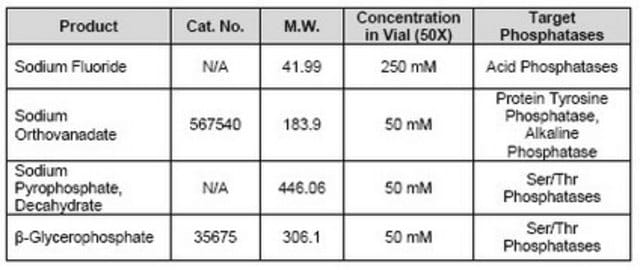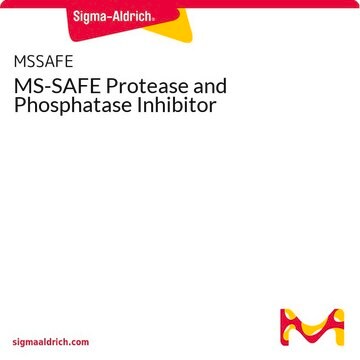524628
Phosphatase Inhibitor Cocktail IV
liquid, for the inhibition of serine/threonine and alkaline phosphatases
Synonym(s):
Phosphatase Inhibitor
About This Item
Recommended Products
product name
Phosphatase Inhibitor Cocktail Set IV, Phosphatase inhibitor Cocktail Set IV is a cocktail of three phosphatase inhibitors for the inhibition of both serine/threonine and alkaline phosphatases.
form
liquid
manufacturer/tradename
Calbiochem®
storage condition
OK to freeze
protect from light
shipped in
wet ice
storage temp.
−20°C
Related Categories
General description
Biochem/physiol Actions
Serine/threonine and alkaline phosphatases
Warning
Physical form
Reconstitution
Legal Information
Storage Class Code
10 - Combustible liquids
WGK
WGK 1
Flash Point(F)
188.6 °F - (refers to pure substance)
Flash Point(C)
87 °C - (refers to pure substance)
Certificates of Analysis (COA)
Search for Certificates of Analysis (COA) by entering the products Lot/Batch Number. Lot and Batch Numbers can be found on a product’s label following the words ‘Lot’ or ‘Batch’.
Already Own This Product?
Find documentation for the products that you have recently purchased in the Document Library.
Customers Also Viewed
Our team of scientists has experience in all areas of research including Life Science, Material Science, Chemical Synthesis, Chromatography, Analytical and many others.
Contact Technical Service












